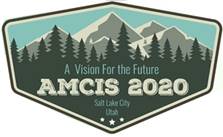Loading...
Paper Type
Complete
Abstract
Monitoring online collaboration is a crucial part to ensure the success of online social learning environments (SLE) in education. While there have been efforts to analyze and evaluate online collaboration, most works do not offer an implementation of new concepts. By applying social learning analytics on an active SLE in a design science methodology framework, indicators for online collaboration are identified in a literature based and data driven analysis, while setting three main objectives: objectifying the monitoring process, establishing comparable indicators and simplifying the conflict identification. We propose visualizations of these indicators to e-tutors responsible for monitoring online collaboration in higher education courses. E-tutors test the implemented visualizations for one semester in a higher education course establishing a proof of concept. Subsequently, the e-tutors evaluate the utility of the visualizations, regarding the set objectives. Finally, limitations of the indicators are discussed and future applications in education are proposed.
Recommended Citation
Lenk, Florian and Clauss, Alexander, "Monitoring Online Collaboration with Social Learning Analytics" (2020). AMCIS 2020 Proceedings. 16.
https://aisel.aisnet.org/amcis2020/is_education/is_education/16
Monitoring Online Collaboration with Social Learning Analytics
Monitoring online collaboration is a crucial part to ensure the success of online social learning environments (SLE) in education. While there have been efforts to analyze and evaluate online collaboration, most works do not offer an implementation of new concepts. By applying social learning analytics on an active SLE in a design science methodology framework, indicators for online collaboration are identified in a literature based and data driven analysis, while setting three main objectives: objectifying the monitoring process, establishing comparable indicators and simplifying the conflict identification. We propose visualizations of these indicators to e-tutors responsible for monitoring online collaboration in higher education courses. E-tutors test the implemented visualizations for one semester in a higher education course establishing a proof of concept. Subsequently, the e-tutors evaluate the utility of the visualizations, regarding the set objectives. Finally, limitations of the indicators are discussed and future applications in education are proposed.
When commenting on articles, please be friendly, welcoming, respectful and abide by the AIS eLibrary Discussion Thread Code of Conduct posted here.


